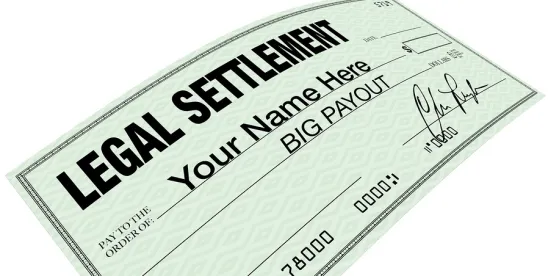A consumer presettlement loan allows access to a lawsuit recovery before the case settles.
When Angie’s car was hit by a speeding delivery truck on a rain-slicked street, her world was upended. Her injuries kept her off work for months. She filed a lawsuit through an attorney who specializes in personal injury matters, but it crawled through the court system. Her attorney told her that a case like hers could take two years to finally reach a settlement. When her doctor told her that she must undergo an expensive operation to correct an injury she sustained in the accident, Angie was distraught. No job meant no insurance, and the single mother was already struggling to pay rent and keep her kids fed. Finally, she called her attorney to ask him if she could settle her case right away so that she could get money to keep her family from being evicted.
Her attorney had another idea. Yes, he said, she could settle, but it could cost her tens of thousands of dollars to settle before the case was fully developed. He suggested a way that she could keep her case moving along and at the same time get access to money to sustain her family while the parties were working to reach a settlement. He gave her the numbers for several litigation funding companies, and within a week, Angie had money in the bank and a sense of peace - all without settling the case.
How was Angie able to gain access to funds and bring some stability to her family without resolving her case? She took advantage of an opportunity to draw on her expected settlement from a company that specializes in presettlement funding. The litigation funding company was able to give her a down payment on the money she expected to get from an eventual settlement or judgment in her car accident case.
What is Litigation Funding?
Litigation funding is known by many names. Presettlement funding, lawsuit loans, car accident loans. For consumers, they all stack up to the same thing. Instead of waiting until the case settles or goes to trial, which can be months or years in a complicated case with potentially a high dollar payout, a presettlement funding company will advance a portion of the expected proceeds to the plaintiff or claimant, who in turn assigns a portion of the recovery to the funding company. In Angie’s case, she received a lump sum payment that she used to catch up bills, get medical treatment, and provide a cushion while she readied to go back to work. In exchange, her lawsuit lender will be paid a portion of her recovery when the case is finally settled.
Who qualifies for a presettlement advance?
The funding agreement is not based on the plaintiff’s creditworthiness. Instead, funding agreements primarily consider the strength of the plaintiff’s case. For the litigation funding company, this transaction is an investment. Like all investors, the company wants to ensure that its investment is reasonably likely to lead to profit. For this investigation, the company employs a team of underwriters who review the case to estimate its potential return.
In evaluating whether a case is a good candidate for a presettlement loan, the underwriter will look at a number of factors.
The active status of the litigation. For most transactions, the lawsuit lender will require that the claimant have an attorney and an active court case. If a case has already been filed, the funder can rely in part on the law firm’s vetting and assessment of the case’s potential. With a case already in the courts, the litigation lender will also have assurances that the case is spearheaded by professional staff whose interests are aligned with the funder's.
The type of case. The cases most likely to qualify for lawsuit loans are personal injury cases or cases in which the plaintiff can expect to receive a cash settlement or judgment. This could include car accidents, slip and fall incidents, destruction of property, negligence, and many others. Some litigation lenders provide funding for other types of cases, like whistleblower, unsafe medical devices, or employment law cases.
In some circumstances, an active case may not be necessary. For instance, some litigation funding companies have provided advances to individuals who filed claims in the Boy Scouts of America Chapter 11 bankruptcy case, the PG&E California Wildfire settlements, and in various product liability class actions.
Settlement potential. Underwriters look at the case from every angle. They evaluate the expected settlement amount and closely consider the case’s timeline. They want to ensure that the case will realize enough to cover the litigation funder’s interest, the cost of the lawsuit, including the attorneys’ fees, expenses of litigation like travel and court reporters, and ancillary costs like letters of protection issued to doctors who provided the plaintiff’s medical care after the accident.
The plaintiff’s commitment. Depending on the potential client’s personal circumstances, a settlement advance may make it easier for a plaintiff to suffer the frustrating effort and time it takes to resolve a personal injury case. Plaintiffs like Angie are more likely to allow the pretrial and discovery phases to fully develop before insisting on settlement if they have fewer financial distractions. Lawsuit loans can help them stay committed to the case long enough to realize the full potential of the case.
The experience level of the plaintiff’s attorney. For personal injury cases filed in court, the litigation funding company will generally not enter a funding arrangement if the plaintiff’s attorney does not approve or fails to cooperate. Most lawsuit lenders prefer to work with experienced attorneys who have a proven track record in litigating personal injury cases, who understand how presettlement funding works, and who appreciate the advantages it can offer clients.
In point of fact, many experienced personal injury attorneys also take advances on their contingency fees so that they can run their firms and pay the expenses of litigation while they, too, await settlement of the case.
Where the plaintiff is located. Litigation funding is a new and emerging industry. The regulatory framework in many jurisdictions has not caught up. At present, the federal government does not regulate litigation funding like it does many consumer lending products are. Therefore, regulation is left to the states and the court system. For the most part, legislators and judges recognize that litigation funding is not a loan. Even in those jurisdictions, lawmakers have attached some of the trappings of consumer regulation, like licensing, caps on fees, and disclosure requirements. Where the law is less settled, fewer litigation funding companies are likely to tread.
Is pre-settlement funding a loan?
Although many people call it a lawsuit loan, the transaction is not a loan at all. It is a vehicle for investors who, in essence, purchase a stake in the litigation. This is a non-recourse agreement. The plaintiff is not personally liable for repayment of the advances. The lawsuit lender, or more accurately, the litigation funding company, is paid out of the proceeds of the settlement or the judgment award if the case goes to trial. If the case does not settle, or settles for less than an amount necessary to cover expenses, the company may not recoup its investment, but it will never look to the plaintiff to repay any of the money it advanced.
What is the downside for the plaintiff?
While plaintiffs ponder the appeal of getting access to proceeds of an unresolved case, they should also carefully consider the consequences. In choosing to work with a lawsuit lender, the plaintiff trades the possibility of earning a higher recovery later for an immediate infusion of cash to cover present needs like replacing income or getting medical care. The plaintiff must also take care to ensure the company is experienced and reputable. Plaintiffs can increase their chances of finding an ethical lawsuit lender by making sure that the company is licensed, if required by their state, or that the company belongs to industry trade associations, like the American Legal Finance Association (ALFA) or the Alliance for Responsible Consumer Legal Funding (ARC). Each organization requires that its members adhere to a list of best practices. By choosing a member company, a funding client can rest assured that the company subscribes to the highest standards in the industry.
How do structured settlements differ from pre-settlement advances?
Someone who settles a case or wins a lawsuit does not necessarily get paid in a lump sum. A structured settlement allows the defendant to pay the settlement or judgment award over time. It works like an annuity, allowing the plaintiff to receive the money in installments according to a negotiated schedule, and sometimes allowing the plaintiff to apply for payment as needed. The money will come either directly from the defendant in the case or as an annuity the defendant purchases from an insurance company. The terms of a structured settlement are negotiated as a part of the overall settlement or after a judgment is rendered.
In contrast, plaintiffs receive presettlement advances often long before the case is settled. The litigation funding company takes on much of the risk that the case will not settle or that it will lose money if the case settles for less than the costs associated with litigating. On the other hand, if the settlement proceeds or judgment amount exceeds the cost of litigation, including the litigation funding company’s return on its investment, the parties may decide that the remaining payout to the plaintiff will be in the form of a structured settlement.
Presettlement lending has grown exponentially in the 20 years since the first funding companies emerged. As more investors discover the potential financial rewards of purchasing a stake in personal injury litigation, plaintiffs like Angie will find that more money is available for presettlement lending. There is little doubt litigation and litigation funding will become more attractive to the plaintiff and the investor.




 />i
/>i

